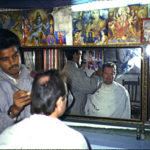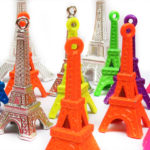1) On the sheer economic power of tourism
In gross economic power [tourism] is in the same company as oil, energy, finance and agriculture. At least one out of every ten people around the world is financed by the industry, according to Wolfgang Weinz of the International Labour Organization, who told me that the figure is probably greater, perhaps one in eight or nine, but it is hard to collect accurate numbers in many countries. Tourism creates $3 billion in business every day.
2) On the advantages of tourism’s expansion in poor countries
Since the end of the Cold War and the opening of the world for travel, tourism has become an important source of foreign exchange for the world’s poorest nations, often the only one. While tourism requires some infrastructure, from airfields to modern highways, it is less expensive than building factories. In theory, poor countries should be able to use the new revenue from the tourism industry to pay for the infrastructure whole raising standards of living and improving the environment. One hundred of the world’s poorest nations do earn up to 5 percent of their gross national product from foreign tourists who marvel at their exotic customs, buy suitcases of souvenirs and take innumerable photographs of stunning landscapes.
3) On the dangers of tourism’s expansion in poor countries
But just as tourism is capable of lifting a nation out of poverty, is it just as likely to pollute the environment, reduce standards of living for the poor because the profits go to international hotel chains and corrupt local elites (what is called leakage), and cater to the worst of tourism, including condemning children to the exploitation of sex tourism. Like any major industry, tourism has a serious downside, especially since tourism and travel is underestimated as a global powerhouse; its study and regulation is spotty at best. Tourism is one of those double-edged swords that may look like an easy way to earn desperately needed money but can ravage wilderness areas and undermine native cultures to fit into package tours” a fifteen-minute snipped of a ballet performed in Southern India; native handicrafts refashioned to fit oversized tourists. What is known is that tourism and travel is responsible for 5.3 percent of the world’s carbon emissions and the degradation of nearly every tropical beach in the world.
4) On the compromised nature of most travel writing
Unlike the oil industry, which is scrutinized at all levels, travel writing has become an extension of the industry. With few exceptions, travel writing and travel sections share the singular goal of helping consumers spend their money pursuing the dream of a perfect trip. They seldom write critical reviews; only articles about what to do and what to buy and how to experience a destination. This “feel-good” approach is rare even in lifestyle journalism, which is where to find the travel sections. Other lifestyle or back-of-the-book journalists thrive on critical reviews, explaining how and why they judge movies as great or miserable; whether the food at a restaurant is mediocre or exquisite; and describing music concerts as electric or boring. Imagine if movie reviewers only discussed their favorite films, if restaurant critics only wrote about their preferred haunts and music critics never wrote a scathing review of a badly performed opera. That is what travel writing has become.
5) On the influence of American national parks and theme parks
America gave the world two great tourist concepts: the national park and the theme park: Yellowstone and Disneyland. Between the two, they define vacations in American and have gone some way to influencing how the rest of the world enjoys a holiday.
6) On the unsustainable nature of the cruise industry
Behind the carefree holidays of a cruise — the dancing waiters, the constant shows and events ,the spreads of great food and the escape from daily drudgery — is a serious industry that has changed what people expect out of a vacation. It was built by several entrepreneurs who took advantage of changes in American lifestyles, married the design of a resort with the rhythm of a theme park, put it on a boat and won sweet deals through giant loopholes in American laws. …The EPA estimates that a cruise ship carrying 2000 passengers on the open sea will pollute the air with the same amount of sulfur dioxide as 31.1 million automobiles every day.
7) On the ways tourism can flatten local cultures
From the first field studies in African, Asia, and the Pacific Islands, anthropologists warned that tourism was turning local culture into a commodity to entertain foreigners and that, ultimately, as foreigners demanded standard hotels, standard meals and standard comforts (including the speaking of English), that local culture would lose its authenticity and then disappear.
Read the book:






